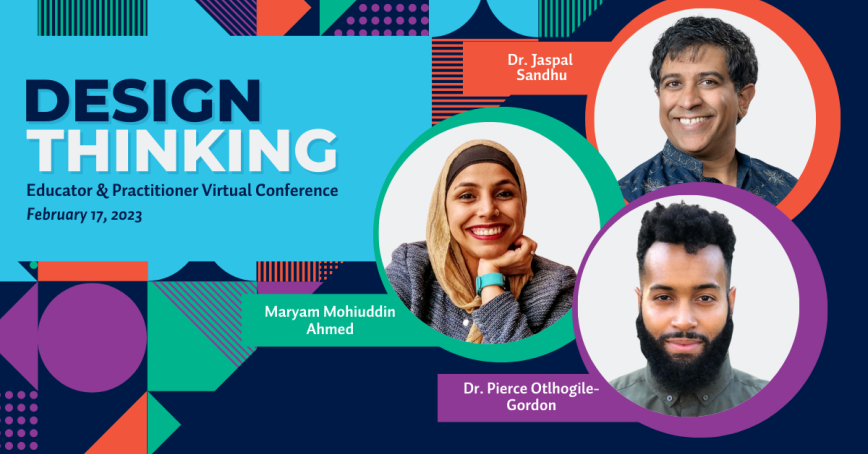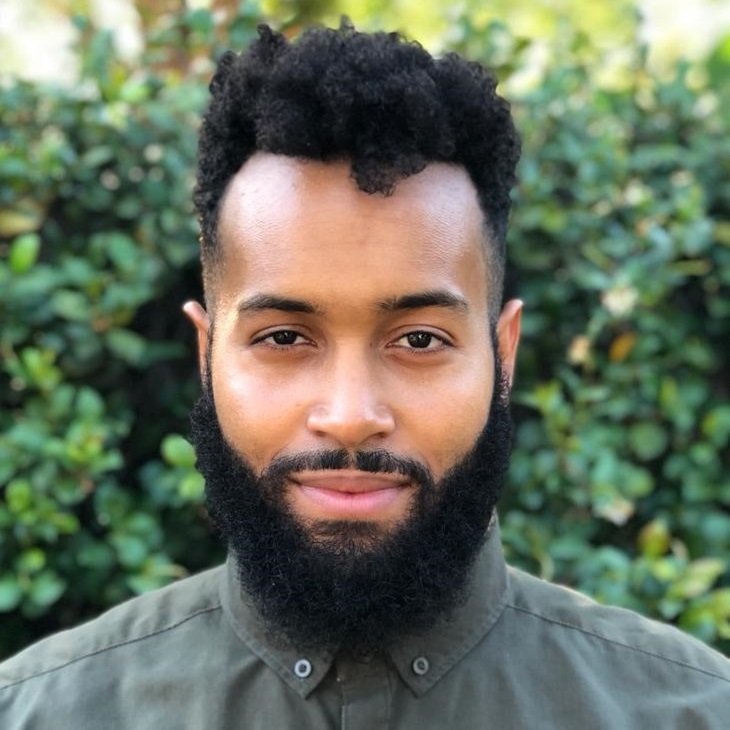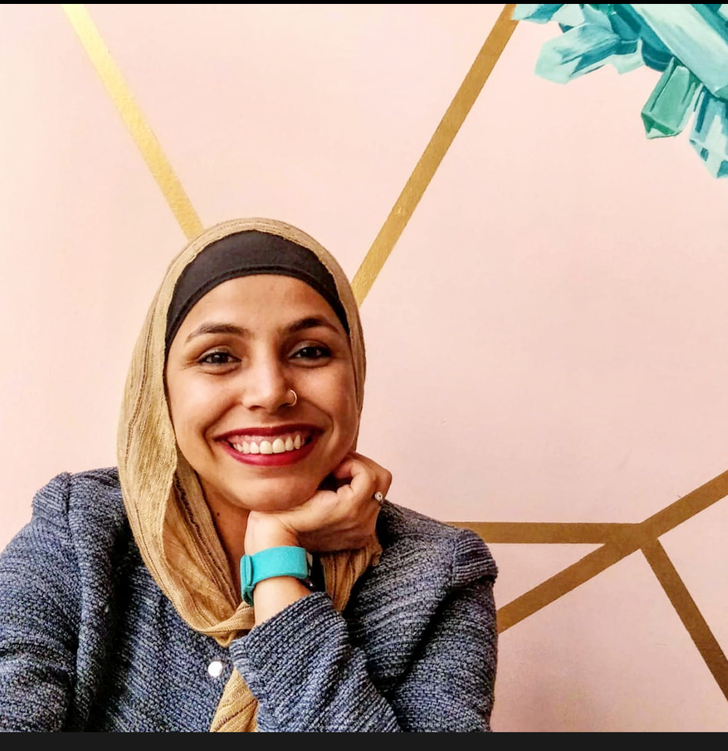Meet the keynote: Dr. Otlhogile-Gordon on designing healthier futures

In advance of Royal Roads University’s Design Thinking Educator and Practitioner Conference on Feb 16 and 17, we’re introducing some of the speakers who will be presenting at the event. The virtual one-day event (preceded by a pre-conference plenary) is a place for those who teach Design Thinking — whether in the classroom or the workplace — to come together in a learning community.
Finances should not be a barrier to learning, sharing, and social innovation. If you are unable to attend due to economic constraints, please use the code SCHOL23 to register. Register now.

Dr. Pierce Otlhogile-Gordon
Practicing Just Transformation: Building Equity into Design
Dr. Pierce Otlhogile-Gordon is the former director of the Equity Innovation studio at Think Rubix, a Black-led social innovation consultancy.
Q: Tell me about your first “win” that made you confident that working in equity, innovation and design spaces was right for you.
A: It was when I found, early in my career, that there was a growing collection of designers looking to make academic inroads in the very same topic. Some colleagues and I at Berkeley wrote up a paper about an equity-centered unhoused design initiative in Oakland we implemented, and the lessons we wanted to offer to the academic community. Some colleagues came across our paper and invited us to a new praxis they were building together; something they called Liberatory Design.
Thousands of people have used their praxis, and those friends invited us to still others, who invited us to a growing community in the space. The win was recognizing this fact: the field is growing, the community is interested in supporting each other, and there’s much more ground to cover.
Q: What inspires you about equity-rooted design?
A: What inspires me is how the field inspires others.
When people usually get exposed to the field, they become concerned that all these new rules might get them stuck in a rut. If the exciting part of design thinking is the ‘making’ part, how do we keep people invested in a process that spends so much time critiquing all the things we’ve made in the world? It’s why I believe the most important part of equity design endeavors is showing alternatives that help inspire a healthier future instead of simply critiquing oppressive artifacts. Designers can be what they can see, in a way — then they can create even more alternatives none of us could have considered.
Q: What are the biggest challenges in your work?
A: People invested in the culture of design have to drop some of the baggage they might not even know they have before they start. The more harmful parts of design — move fast and break things, build only for the market, cut off access from the process and benefits of the products you build — are invisible principles that must be named before we think about designing other ways. It also takes a lot of personal work that might happen before anything is designed: understanding one’s positionality, building relationship with others, and allotting time and resources to imagine more equitable worlds. Doing any of this requires a massive amount of trust, vulnerability, and relationship-building.
Q: You’ve said that if we want to shape the future, “innovators need to understand how they wield power.” Can you expand on that?
A: Absolutely!
Like I discuss in the article, it’s a core human quality to want power; to manipulate objects, people, ecosystems, resources, in the way they desire. Innovators do so in unique ways; by building new products and services, by building spaces of imagination, by building communities, and by crafting stories, among others.
What matters, however, is recognizing that anything a designer builds - ChatGPT, Internet of Things, a REDD+ protocol - takes up more space in our world than simply physical space. We can build technological inflection points that affect how culture operates, how people relate to each other, and who benefits from the social contracts in society. If you don’t think about the consequences of what you build, someone else will — usually by taking power away from the already disempowered.
Q: You’ve noted the importance of making space for others in design. How do make space within the work you do?
A: There’s a question I use, when trying to make everyday decisions: does this action invite others, or exclude them?
This starts wherever I do my work. This means giving them decision-making power in how we run meetings and discussing pay rates for our labor. It means learning about what draws people to a project, and making sure people understand what will come from the experience and how they can benefit. It means respecting their cultural contexts during the design process.
Honestly, this is very difficult work. Our society has made it much easier to exclude than to include by making decisions without others, exploiting their work and experience, and only worrying about the people with socioeconomic power. However, I’ve found there’s an internal scale that activates in a team when they recognize a more inclusive form of work is possible; they feel respected and filled with agency.
And for most of my colleagues, they never want to go back.
Q: What piece of advice would you give someone grappling with how to best foster design thinking in the classroom or their workplace?
A: Make a small hurdle that moves you towards the designer you want to be and clear it!
This might mean making a new thing you normally wouldn’t.
This might mean surrounding yourself with different colleagues, friends, and strangers that offer different perspectives.
This might mean putting ideas together that make no sense.
But, we’re all busy-fied humans. Starting small is the easiest way to somewhere, and make sure you’ve made a bit of progress.
And, the more different things you try, the more likely you’ll find something that fits, that you can practice, that you can embody.
Meet our other keynote speakers

Maryam Mohiuddin Ahmed
Gesturing towards Decoloniality in Design: From Human to Humility-centered framings
Taking a decolonial approach to design necessitates looking elsewhere for inspiration. For me, this has always come from the Global South, particularly in my interaction with indigenous and traditional wisdom frameworks deeply rooted in my Motherland, Pakistan. Diving deeper into these framings has resulted in a shift in my design approach from more “human-centered” approaches, to more “humility-centered” ones. My presentation will explore examples of what more regenerative, land-based, in some cases faith-based, “humility-centered” approaches to design can look like.

Dr. Jaspal S. Sandhu
Trust in Design: Why Relationships Matter for Impact
Jaspal teaches courses bridging public health, engineering, and business at UC Berkeley, where he served as the Fung Fellowship’s faculty lead from 2016-2021 and created the first-ever human-centered design course in a school of public health. For 12 years before joining Hopelab, Jaspal was managing partner at Gobee, a global design consultancy that he co-founded to spark social innovation. Gobee’s work in 25 countries included developing next-generation medical devices for newborns and infants in sub-Saharan Africa and South Asia, launching an incubator for domestic violence prevention, and building human-centered design capacity in 20 health care safety net clinics and hospitals in the U.S. In his early career, he worked in product engineering roles for Nokia and Intel, and conducted research on rural health care technology as a Fulbright scholar to Mongolia. He holds a Ph.D. in design from UC Berkeley and master’s and bachelor’s degrees in engineering from M.I.T.
He is currently exploring the role of art in advocacy and community building. Learn more about Jaspal and his work in technology and well-being at Hopelab.